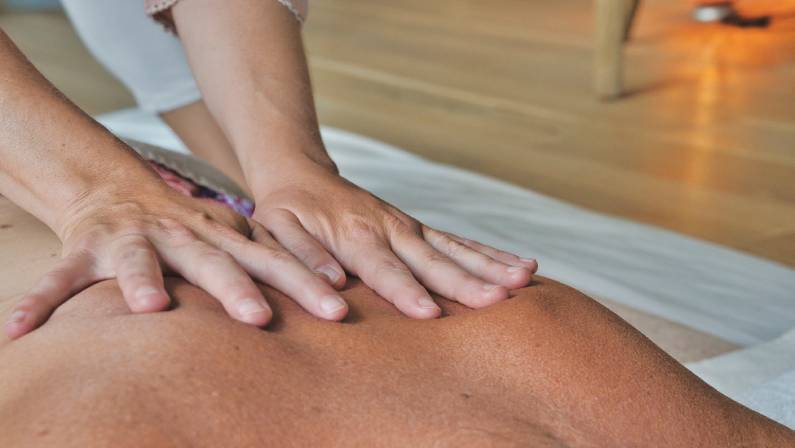Thai Massage Vs. Deep Tissue Massage: Which is Right for You?
August 29, 2022
Have you been considering getting a Thai massage but are unsure what it entails and its advantages are? Perhaps you're wondering about its main distinctions from a typical deep tissue massage. If so, you should continue reading this article. For your convenience, we're going to address the query: "What is the difference between a Thai massage and a deep tissue massage?"
The variations between Deep Tissue Massage and Thai massage
Discover the unique differentiators between a deep tissue massage and a traditional Thai massage. Delve into the contrasting features of Thai massage vs deep tissue massage, exploring their distinctive qualities and benefits:
Equipment
The tools utilised differ significantly between a Thai massage and a deep tissue massage. You lie down on a massage table for the majority of traditional massage treatments. The majority of the time, a Thai massage is performed on a floor mat.
Oil and cream
Traditional Thai massage does not rely on topical creams or oils for its therapy, unlike most massage techniques, which frequently employ them. But in other cases, a combination of oil and Tiger Balm may be applied to troublesome regions.
Techniques
Of course, the techniques utilised in Thai massage and deep tissue massage are where the major contrasts lie. The ancient art of traditional Thai massage dates back thousands of years.
Deep tissue massage frequently uses a variety of techniques, including pressure, rotating movements, and deeper penetration on troublesome areas like the neck, back, or shoulders.
On the other hand, a Thai massage is more focused on a variety of movements and yoga-like stretches. Additionally, your therapist may stand on your back and use their feet to apply greater pressure to specific places while performing a Thai massage. Not to worry! It's not as unpleasant or strange as it seems!
This is another reason why traditional Thai massage is not performed on a table; if the masseuse were to stand on top of your body while it was resting on a massage table, it would probably fall over or collapse. However, your traditional Thai masseuse can optimise their weight displacement while performing the massage while lying on a mat on the floor and using some safety railings that are hung from the ceiling or off the walls.
Benefits of both Deep tissue and Thai massage
What are the advantages of Thai massage and deep tissue massage now that we are aware of some of their differences? Continue reading.
Benefits of Thai massage
The following are just a few of the incredible health advantages of Thai massage:
- - Soothes headache
- - improves back ache
- - reduces joint pain and stiffness
- - increases range of motion and flexibility
- - decreases fear
- - renews your energy
- - reduces stress
In order to increase the flow of energy through your Sen lines, your Thai massage therapist will move your body into a variety of different yoga-like poses while pulling on and rocking your body in various ways. Thai massage is based on the idea that energy moves throughout your body via predictable lines and pathways known as Sens.
In contrast to other massage techniques that only require you to lie motionless, Thai massage often uses a combination of stretching, movement, and pressure. This makes Thai massage a good option if you want to take a more active part in your treatment and pick up some intriguing stretches and positions in the process.
Benefits of deep tissue massage
The following are just a few of the fantastic health advantages of deep tissue massage therapy:
- - decreases pain
- - reduces stress
- - lowers heart rate and blood pressure
- - destroys scar tissue
- - facilitates movement
- - reduces arthritic symptoms
In order to massage the deeper layers of muscle and the connective tissue that surrounds your muscles, deep tissue massages frequently use strong pressure and slow strokes.
Muscle knots and scar tissue can both be removed with this technique. These knots have a propensity to restrict blood flow and to produce excruciating pain and inflammation.
Your massage therapist will begin by applying gentle pressure to warm up your muscles before advancing deeper and adding greater pressure.
Stripping is one of the methods most frequently employed in deep tissue massage. This entails applying deep pressure along the length of your muscle fibres. Another is friction, which involves applying pressure to your muscles against their grain to loosen up knots and properly align the fibres of your tissue.
Thai Massage vs Deep Tissue Massage: Which Is Better?
It's a challenging topic to pose given the incredible health advantages of both Thai and deep tissue massage. Which therapy is most appropriate for your illness actually makes a difference. For instance, a deep tissue massage is perfect if you have been dealing with muscle soreness, tension, and knots. Thai massage is the way to go, though, for your general health, enhanced mobility, joint alleviation, and a variety of other advantages.
You will leave the massage parlour feeling as light as air after receiving a great Thai massage from an expert therapist.
Conclusion
We trust that this post on Thai massage vs deep tissue massage was informative and that you now have a better grasp of how the two differ from each other. There are several massage clinics to choose from if you want a top-notch Thai massage. Simply take your time, conduct thorough research, and choose the spa where you feel most at ease.